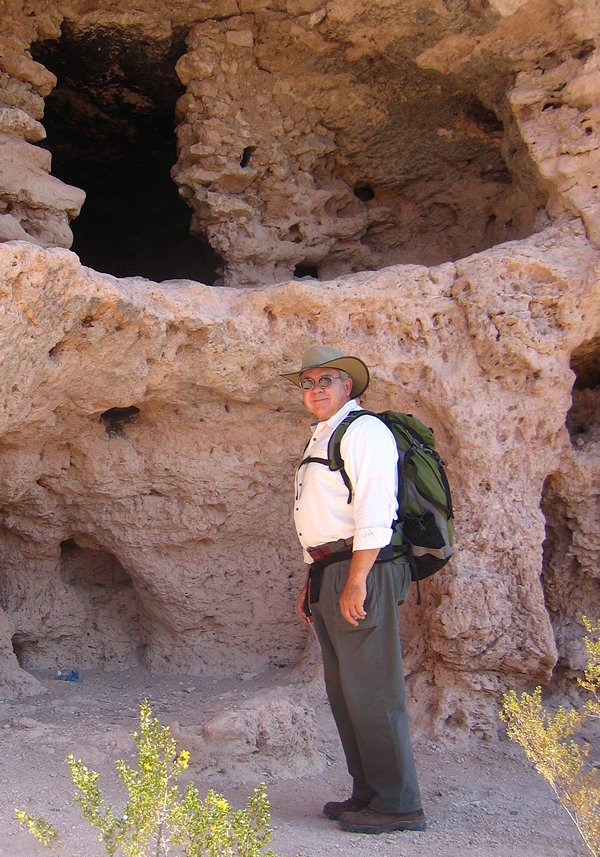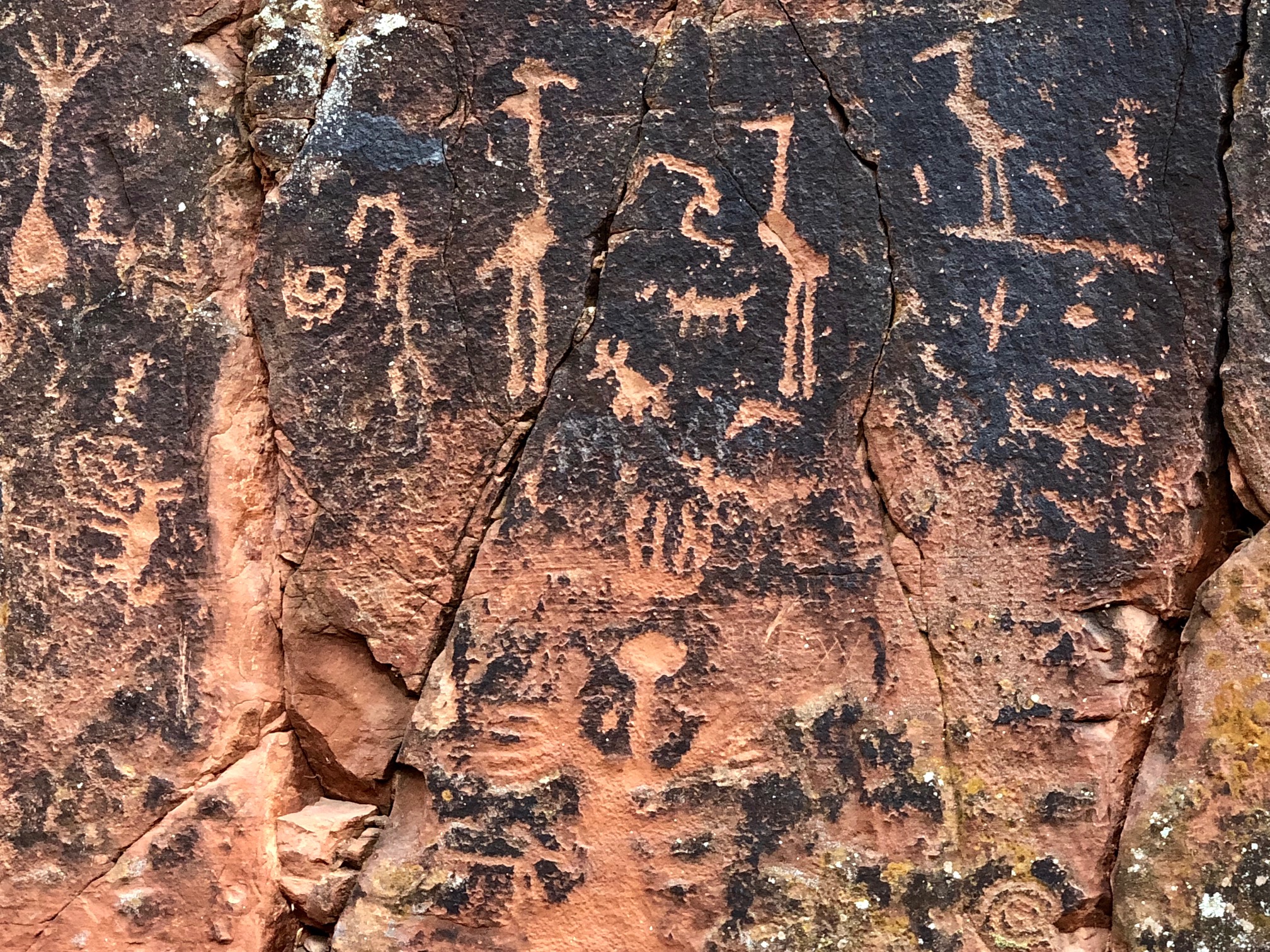Over a thousand years ago, at a secluded and nondescript rock wall along Beaver Creek in the Arizona desert, someone began to carve into the stone. A succession of other artists followed. The resulting artwork grew, continuing for generations, and in time the beauty of the site overshadowed its original purpose. That purpose long remained elusive. Now one man has discovered the secret.
When thinking of terms to describe an archaeologist, we might use such words as rugged, daring, and adventurous. The people who perform that sort of work are the stuff of legends, novels, and blockbuster movies: larger-than-life, colorful figures.
And then there’s Ken Zoll, the Executive Director of the Verde Valley Archaeology Center, whose charming, unassuming manner reminds one more of Andy Taylor than Indiana Jones. Chatting with Ken about archaeology is like swapping recipes with a gourmet chef. The conversation flows, meanders, drifts into fascinating facts and obscure points of history. It is engaging and never dull. Ken is a man who simply loves his work.
But essentially, he is not an archaeologist, per se. Ken Zoll is, in his own words, an “avocational archaeologist,” meaning that he holds no formal degree in archaeology. His background is in accounting and finance, but his passion from an early age was astronomy.

The story of how Ken’s path came to be intertwined with the renowned V Bar V petroglyphs may seem an unlikely one on the surface, but when you dig deeper, the connections begin to emerge.
The history of the V Bar V archaeological site is a long and colorful one. It had been known since 1890, but until recently, very little scholarship had been devoted to it. Remarkably well preserved, the artwork was created over a 450-year period starting around the year 950. The creators of this remarkable assemblage of pictographs and petroglyphs (paintings and carvings) were the Sinagua people—the ancestors of today’s Hopi tribe. The Hopi eschew the Spanish term and instead refer to their forebears as “Hisatsinom,” the Hopi word for “Ancient Ones.” Whatever they were called, the fruits of their labor are nothing less than astounding.
Meanwhile, hoping to indulge his love of astronomy with Arizona’s famed clear night skies, Ken Zoll retired to the Sedona area in 2004. He discovered that his house lay only fifteen minutes away from the V Bar V Heritage site, and he volunteered as a docent there. “I thought it would be fun to be outdoors and interacting with visitors,” Ken says. “My hobby had been astronomy, so this allowed me to combine the two.”
But soon, he began noticing certain aspects of the site that others had missed. There were a series of concentric circles cut into the stone that looked like bullseye targets. “Father Sun” images, he calls them—the same sort of images used in calendar making with light and shadow. Starting in February of 2005, Ken watched the images, noting the interaction of shadows and light passing across them. The results were immediately striking—and obvious. “From there,” he says, “it was just a process of recording the effects on a regular basis.”

The site slowly gave up its secrets. The sun interacting with two boulders cast shadows on the rock wall, especially apparent at certain times of the year. It was a calendar, and the Sinagua people used it to predict the change of seasons and the time of the year. On the night of the winter solstice, a shaft of light hits the center of the “Father Sun” petroglyph: Bullseye.
What Ken had delved into is known in archaeological circles as “Archaeoastronomy”. It’s a rather obscure field, Ken admits, and one for which there are no university courses available. Practitioners of it are largely self-taught.
In the years since his discovery, Ken has continued to study the site, as well as others along Beaver Creek. He’s now considered an expert on them. His book
Sinagua Sunwatchers: An Archaeoastronomy Survey of the V Bar V Heritage Site expands on his findings. “This is my “found” second career,” Ken says with a grin.
The site at V Bar V is by no means isolated; it is merely the largest and most heavily studied. The Verde Valley is a veritable treasure trove of archaeology, with sites stretching all along Beaver Creek—well over 450 sites in total. The creek probably functioned as a kind of access corridor for the Sinagua people. “This was clearly a major highway,” Ken says.
Currently, Ken is working on another book—a presentation of his research and the history of the V Bar V site. It’s set to be titled “
The Crane Petroglyph Heritage Site” and is due to be published in the fall of 2022. There’s much of the story left to be told, and Ken is just the man to tell it.
As of now, Ken is set to retire again in September 2022. But anyone who knows Ken Zoll is likely to suspect the truth: He’s just waiting to begin a third career.
More information on the V Bar V and other sites in the Verde Valley can be found at






